September 12, 2003
Too Many Notes
 It sucked me right in, an article by Scott Timberg for the LA Times. "Discouraging words are seldom heard against Frank Gehry's Disney Hall. Here are a few." I like modern architecture in general; specifically I like the sculptural work that emerged from the demise of the "post-modern" and "deconstructivist" trends of the seventies and eighties. I particularly like Frank Gehry's work. However, he has become something of a cultural icon, especially in Los Angeles, and who in our voyeuristic society is not interested in the demise of icons in general. So, I was interested to read what a critic might write about this particular work. There were many possibilities. Perhaps they did not like the sensual textural quality of the forms and surfaces. Perhaps they felt it was too similar to his previous work, that in essence it was a stagnantation of his efforts. Perhaps it had been found that the acoustics, always more art than science and experimental at best, were not tuning properly. All of these issues would have been interesting possibilities to explore, but no such luck. Some of the critiques have to do with urbanism. These concerned the integration of the building into the fabric of the city of Los Angeles and its potential to resolve the pervasive lack of life vitalizing that fabric. The other critiques, unintentionally I suspect, were about the place of creativity in our society.
It sucked me right in, an article by Scott Timberg for the LA Times. "Discouraging words are seldom heard against Frank Gehry's Disney Hall. Here are a few." I like modern architecture in general; specifically I like the sculptural work that emerged from the demise of the "post-modern" and "deconstructivist" trends of the seventies and eighties. I particularly like Frank Gehry's work. However, he has become something of a cultural icon, especially in Los Angeles, and who in our voyeuristic society is not interested in the demise of icons in general. So, I was interested to read what a critic might write about this particular work. There were many possibilities. Perhaps they did not like the sensual textural quality of the forms and surfaces. Perhaps they felt it was too similar to his previous work, that in essence it was a stagnantation of his efforts. Perhaps it had been found that the acoustics, always more art than science and experimental at best, were not tuning properly. All of these issues would have been interesting possibilities to explore, but no such luck. Some of the critiques have to do with urbanism. These concerned the integration of the building into the fabric of the city of Los Angeles and its potential to resolve the pervasive lack of life vitalizing that fabric. The other critiques, unintentionally I suspect, were about the place of creativity in our society.
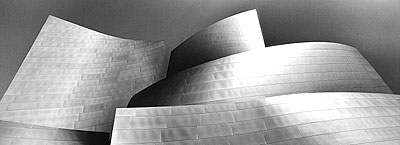 Tridib Banerjee, a Professor of Urban and Regional Planning at USC complained that the building is hard to see, there is no space around it for people to congregate or contemplate it fully. "With the Pompidou, (in Paris) there is a plaza in front of it, a site for assembly." Apparently Banerjee has forgotten some of the lessons of sixties modernism. The grand plazas, both designed and legislated into being around many commercial and public buildings, often end up as dehumanizing windblown wastelands. Instead of connecting buildings to the fabric of a city, they intentionally set them apart, elevating and dissociating the edifices that they protect from the encroachment of the older, more humanely textured city. Banerjee seems not to appreciate that architecture can be enjoyed from a variety of equally valid perspectives. Yes, it can be gazed at from afar like some remote untouchable jewel, but perhaps it is a more interesting experience if your perspective is closer. If you can look up from beneath it, touch it, feel the change in texture and see the subtle play of light across a surface. You can find the dirt in the crevices and see the patina as it ages. Medieval cathedrals were built with the city up against them, rising out of the rubble of humanity. They were intertwined with their cities and the elevating aspect of experiencing them derived from using them. In this perspective, architecture has always been an early form of interactive art. The art object never stands alone. It requires a participant to give it life. It is a different kind of experience, equally interesting and not a matter of judging better or worse.
Tridib Banerjee, a Professor of Urban and Regional Planning at USC complained that the building is hard to see, there is no space around it for people to congregate or contemplate it fully. "With the Pompidou, (in Paris) there is a plaza in front of it, a site for assembly." Apparently Banerjee has forgotten some of the lessons of sixties modernism. The grand plazas, both designed and legislated into being around many commercial and public buildings, often end up as dehumanizing windblown wastelands. Instead of connecting buildings to the fabric of a city, they intentionally set them apart, elevating and dissociating the edifices that they protect from the encroachment of the older, more humanely textured city. Banerjee seems not to appreciate that architecture can be enjoyed from a variety of equally valid perspectives. Yes, it can be gazed at from afar like some remote untouchable jewel, but perhaps it is a more interesting experience if your perspective is closer. If you can look up from beneath it, touch it, feel the change in texture and see the subtle play of light across a surface. You can find the dirt in the crevices and see the patina as it ages. Medieval cathedrals were built with the city up against them, rising out of the rubble of humanity. They were intertwined with their cities and the elevating aspect of experiencing them derived from using them. In this perspective, architecture has always been an early form of interactive art. The art object never stands alone. It requires a participant to give it life. It is a different kind of experience, equally interesting and not a matter of judging better or worse.
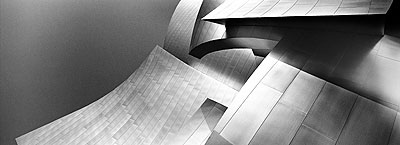 Banerjee also commented that "It is a public building. It should contribute to civic pride and public life. It should create a sense of public space." Aside from the issue that "civic pride" and "public space" have no commonly accepted definition, he also has lost track of the client. It is not a public building. It was built for the Los Angeles Symphony via a massive private fund raising effort that took over a decade. The city of Los Angeles disassociated itself from the effort almost entirely. The city was certainly not the client and it is the client that gets to set the parameters of the problem.
Banerjee also commented that "It is a public building. It should contribute to civic pride and public life. It should create a sense of public space." Aside from the issue that "civic pride" and "public space" have no commonly accepted definition, he also has lost track of the client. It is not a public building. It was built for the Los Angeles Symphony via a massive private fund raising effort that took over a decade. The city of Los Angeles disassociated itself from the effort almost entirely. The city was certainly not the client and it is the client that gets to set the parameters of the problem.
Lastly, the urban planners complain that the building turns its back on the pedestrian life on the street. You have to wonder what city they are living in as it certainly is not Los Angeles. There is no pedestrian life on the streets of Los Angeles. A lot of planners wish it were there, but they can't quite figure out a way to legislate it into being now that they have decided that street life might be important.
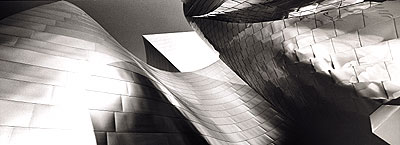 The client issue also arises with respect to the acoustics of Disney Hall. "The hall is built to amplify. It will be suitable only for orchestral and other acoustic music." Well, you can't be everything to everybody and this is particularly true for music where the shape of the building has a profound impact on the sound. Like it or not, when you and your friends donate hundreds of millions of dollars to build a structure, you get to decide what kind of music you want to hear. I would assume that you also get lifetime seats, but maybe not. If you want a venue for experimental music you need to go find your own sponsor.
The client issue also arises with respect to the acoustics of Disney Hall. "The hall is built to amplify. It will be suitable only for orchestral and other acoustic music." Well, you can't be everything to everybody and this is particularly true for music where the shape of the building has a profound impact on the sound. Like it or not, when you and your friends donate hundreds of millions of dollars to build a structure, you get to decide what kind of music you want to hear. I would assume that you also get lifetime seats, but maybe not. If you want a venue for experimental music you need to go find your own sponsor.
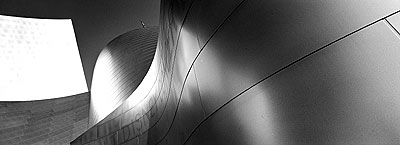 My favorite critiques, particularly with regard to their absurdity, concerned Gehry's excess of creativity. More specifically, these critiques demonstrate an increasingly common unwillingness to think independently. Far too many people, politicians and educators in particular, seem not to know what they like until they have taken a poll. Li Wen, a faculty member at the USC architectural school commented "A difficult model for young students, for it tempts them to think that anything goes." Forgive me, I must have misunderstood, when is it better to think that anything goes than in your youth? Youth is always tempted and unrestrained, only through experience can you know what works and what does not. Who better to dream wild dreams than our youth. It is sublimely ridiculous to say that we should not stretch creatively. Surely Li Wen's obligation to his students is not to deter creative thinking, but to teach students what to do with a wildly creative idea when they get one, and interesting ideas are surely rare enough. Wen needs to help students find a technique for managing creativity so that it is not lost, to find a methodology for shaping ideas.
My favorite critiques, particularly with regard to their absurdity, concerned Gehry's excess of creativity. More specifically, these critiques demonstrate an increasingly common unwillingness to think independently. Far too many people, politicians and educators in particular, seem not to know what they like until they have taken a poll. Li Wen, a faculty member at the USC architectural school commented "A difficult model for young students, for it tempts them to think that anything goes." Forgive me, I must have misunderstood, when is it better to think that anything goes than in your youth? Youth is always tempted and unrestrained, only through experience can you know what works and what does not. Who better to dream wild dreams than our youth. It is sublimely ridiculous to say that we should not stretch creatively. Surely Li Wen's obligation to his students is not to deter creative thinking, but to teach students what to do with a wildly creative idea when they get one, and interesting ideas are surely rare enough. Wen needs to help students find a technique for managing creativity so that it is not lost, to find a methodology for shaping ideas.
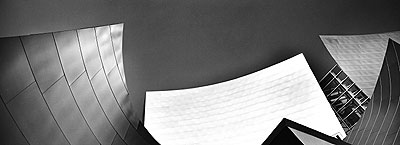 Finally we have Robert Ringstrom's comment, "I am not comfortable with such personal self-expression." Good God, then what on earth are you doing living in the United States. This reaction is actually foolishness on my part as the dichotomy between freedom and conformity is a well established part of American culture. Perhaps it has to do with our relative adolescence as a country, but that would mean the there is some hope of achieving a more mature approach, which I find unlikely. We have more freedom than anywhere else in the world, but we overlay the exercise of that freedom with a host of puritanical constraints. "Self expression" is evil, dangerous, and frowned upon. Creativity must be limited and constrained, corseted. It must be doled out by a pre-approved cultural authority.
Finally we have Robert Ringstrom's comment, "I am not comfortable with such personal self-expression." Good God, then what on earth are you doing living in the United States. This reaction is actually foolishness on my part as the dichotomy between freedom and conformity is a well established part of American culture. Perhaps it has to do with our relative adolescence as a country, but that would mean the there is some hope of achieving a more mature approach, which I find unlikely. We have more freedom than anywhere else in the world, but we overlay the exercise of that freedom with a host of puritanical constraints. "Self expression" is evil, dangerous, and frowned upon. Creativity must be limited and constrained, corseted. It must be doled out by a pre-approved cultural authority.
Ultimately the most interesting critique of Frank Gehry's Disney Hall comes down to this dichotomy between freedom and conformity. We love the building because it is unique, challenging and sensual, but ultimately it doesn't fit. It doesn't further the popular urban agenda. You are challenged to decide whether of not to think and feel on your own, without the aid of a guide, or to surrender yet again to some sanitized version of what space, architecture, urbanism and life are supposed to be.
(Photos: Gil Garcetti, Iron: Erecting the Walt Disney Concert Hall)
Posted by psa